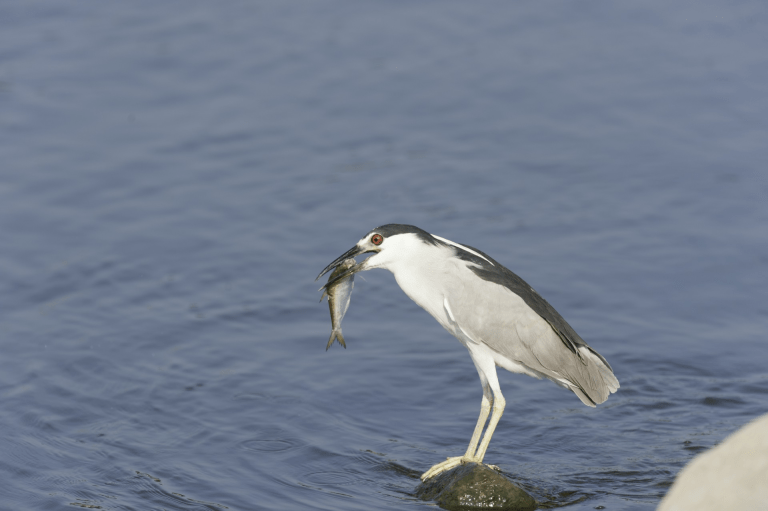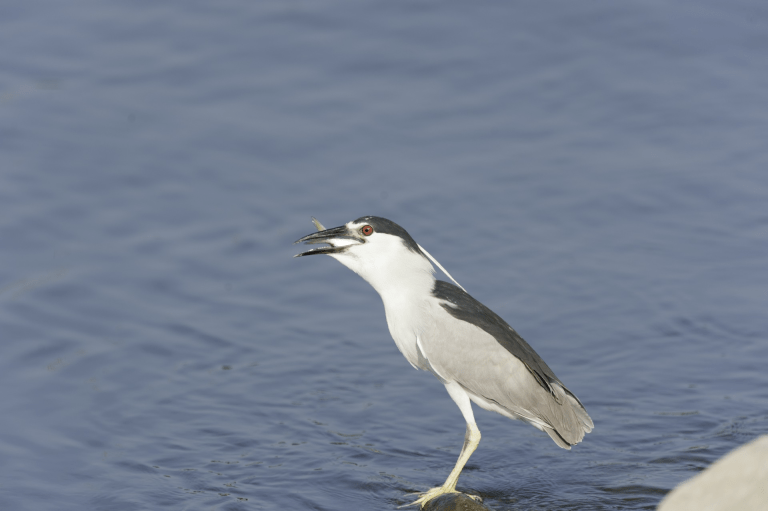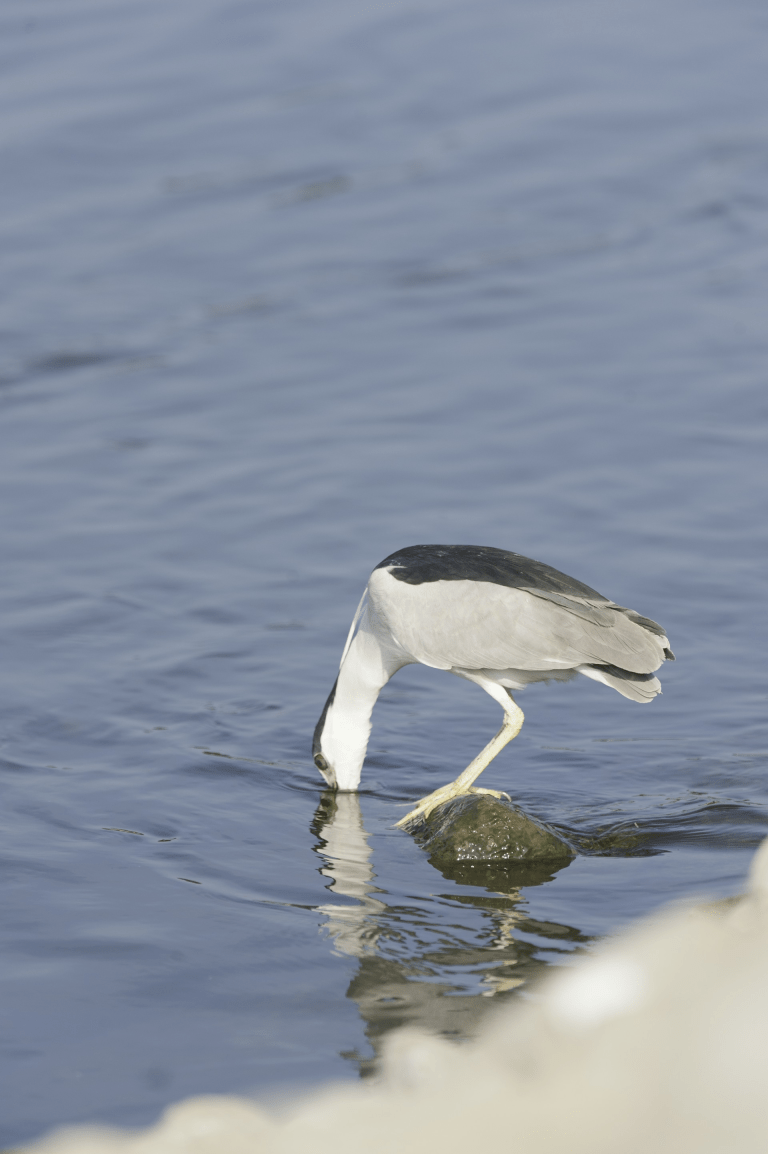Today we have some noshing birds by reader Thomas Stringfellow. His captions are indented, and you can enlarge the photos by clicking on them:
The photos were taken in July 2011 below the dam at Lake Barkley in Kentucky, and feature our old friend the Black-crowned Night-Heron (Nycticorax mycticorax) having lunch at the all-you-can-eat buffet. This is a remarkable place for many species of birds, and photographing them is made easier because they are largely habituated to humans.
The order obviously tells a story; I especially like the drink at the end to help wash down the fish.
Camera details: Nikon D3 camera shot in aperture priority mode, Nikkor 400 mm f/2.8 telephoto lens with a Nikon 1.4x teleconverter.







Cool
Thanks for the great pics!
Apart from how it must feel to the prey animal to be swallowed alive, I always wonder how it feels to the predator to have a live, wriggling animal in its gut. At the least, they must have tough guts to avoid being punctured.
Yesterday I watched a crow picking apart and consuming a live sparrow, and I must say I found that a bit disturbing. But the Stoic attitude would be, if you love nature, you have to love all of it.
+1
I like the stoics, but I don’t know if I agree with loving ALL of nature. For example, I sometimes wonder about whether it is ethical to reintroduce predators into ecosystems where humans have eliminated them. By the evidence, prey animals live happier lives when they don’t have to live with the constant fear of being preyed upon.
(Yes, I know that predators do them a favor by picking off sick animals and arresting epidemics, and sparing them the misery of overpopulation and starvation, etc. But whether that balances out the misery of living with the constant fear of being eaten alive like your poor sparrow, I don’t know.)
I believe diversity of species suffers when the top predator is absent.
In Sean B Carrol’s book “Serengeti Rules” he wrote of an experiment of a single top predator species influence on it’s ecology AFTER it was removed.
It was a starfish habitat on a rocky coastline and over five years. The effect of removal started to show after three months.
“The predator stabilized the community by negatively regulating the population of the competitively dominant species”
It turned out that without this regulation the competitively dominant species induced a collapse of species diversity, eventually reducing the immediate area to a mono ecosystem. It took over.
In nature perhaps a bit of tension is a good for the benefit of all… better to be than not to be?
The effects of such experiments have been observes in a variety of situations. Here’s an example with wolves:
https://www.yellowstonepark.com/things-to-do/wildlife/wolf-reintroduction-changes-ecosystem/
Excellent!
Very good. I think the night heron might be one of those birds that seem to have a telescoping neck.
Very nice sequence. Thanks! A pretty uncommon bird in SE Ohio, where I live. Love hearing their strange call in the night.
That was fun, thanks. Not for the fishy, of course. What a way to go…gulp.
New species to me. I hit on your link to see how big he is.. bigger than I’d guessed seeing him by himself there. Decent sized fish, too! Thanks!